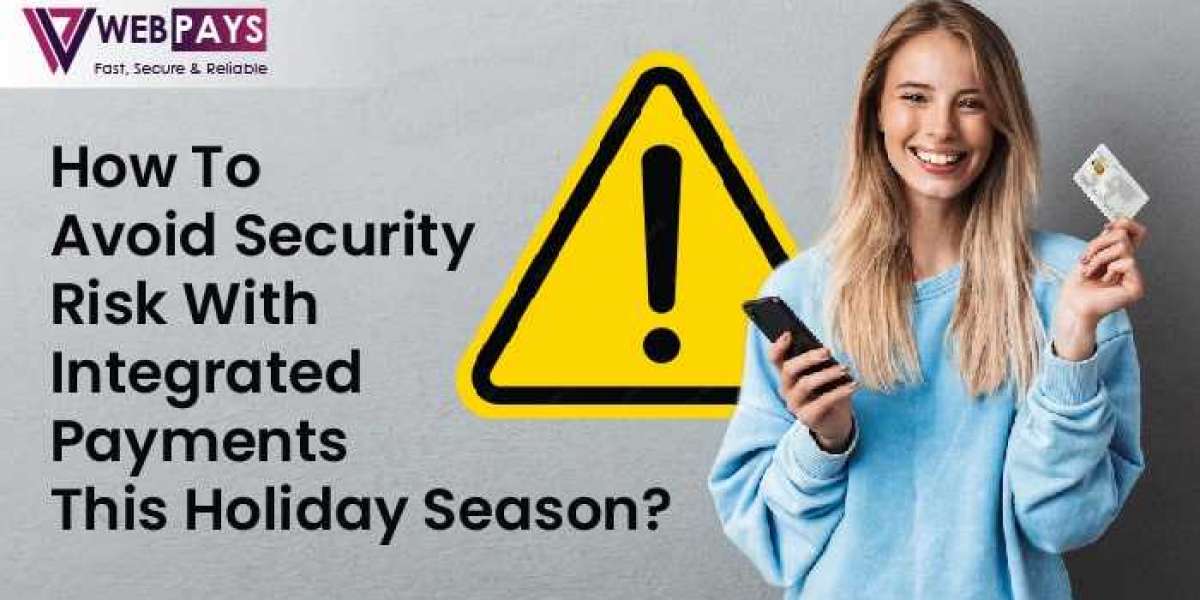The holiday season brings joy, festivities, and increased online shopping activity. With the surge in transactions, however, comes the heightened risk of security breaches and fraud. As businesses gear up to capitalize on the holiday rush, it's crucial to prioritize security, especially when it comes to integrated payments. In this comprehensive article, we will explore key strategies to avoid security risks associated with payment gateway integration during the holiday season. From understanding common threats to implementing robust security measures, let's ensure a safe and secure shopping experience for customers and merchants alike.
Understanding Integrated Payments and Security Risks
Integrated payments refer to the seamless integration of payment processing capabilities into various business systems, including e-commerce platforms, point-of-sale (POS) systems, and mobile applications. While integrated payments offer convenience and efficiency, they also introduce security risks that can compromise sensitive payment data. We have mentioned the possible security risks in the below section. Read on.
Common Security Risks with Payment Gateway Integration
- Data Breaches: Unauthorized access to payment data, such as credit card numbers and personal information, can result in data breaches, leading to financial losses and reputational damage for businesses.
- Phishing Attacks: Phishing attacks involve fraudulent emails or websites designed to trick users into revealing sensitive information, such as login credentials or credit card details, which can then be exploited for fraudulent transactions.
- Malware and Ransomware: Malicious software, such as malware and ransomware, can infect systems and compromise payment data, leading to unauthorized transactions or data encryption until a ransom is paid.
- Man-in-the-middle Attacks: In a man-in-the-middle attack, a cybercriminal intercepts communication between two parties, such as a customer and a merchant, to steal sensitive information or manipulate transactions.
Ways Integrated Payments Offer To Mitigate Security Risks
As of now, we have explored the possible risks that can happen with payment gateway integration. But what about the solutions? There are certain ways offered by integrated payments to avoid these risks. Below are the key ways offered by the integrated payments to enhance security for customers during the holidays:
- End-to-end Encryption: Integrated payment systems often employ end-to-end encryption, which ensures that payment data is encrypted from the moment it is entered by the customer until it reaches the payment processor. This encryption prevents unauthorized access to sensitive information, such as credit card numbers, throughout the transaction process.
- Tokenization: Integrated payment solutions may utilize tokenization, a process that replaces sensitive payment data with unique tokens. These tokens are meaningless to potential attackers and cannot be used to conduct fraudulent transactions even if intercepted, providing an additional layer of security for customer information.
- Fraud Detection and Prevention: Many integrated payment systems incorporate advanced fraud detection and prevention mechanisms. These systems use machine learning algorithms and artificial intelligence to analyze transaction patterns in real-time, identifying and flagging suspicious activities, such as unusual spending patterns or multiple failed login attempts, to prevent fraudulent transactions.
- PCI Compliance: Integrated payment solutions are often designed to comply with the Payment Card Industry Data Security Standard (PCI DSS), a set of security standards established to protect cardholder data. By adhering to PCI compliance requirements, integrated payment systems ensure that customer payment data is stored, processed, and transmitted securely, reducing the risk of data breaches and fraud.
- Secure Authentication Methods: Integrated payment systems may offer secure authentication methods, such as two-factor authentication (2FA) or biometric authentication, to verify the identity of customers during transactions. These authentication methods help prevent unauthorized access to customer accounts and enhance security by requiring additional verification steps beyond passwords or PINs.
Overall, integrated payment solutions provide a comprehensive approach to security, combining encryption, tokenization, fraud detection, PCI compliance, and secure authentication methods to protect customer data and ensure a safe and secure shopping experience during the holidays and beyond.
Conclusion
In conclusion, safeguarding customer data and ensuring a secure shopping experience is paramount, especially during the bustling holiday season. Integrated payments offer robust solutions to mitigate security risks associated with payment gateway integration. From end-to-end encryption to advanced fraud detection and compliance with industry standards like PCI DSS, integrated payment systems provide comprehensive security measures to protect sensitive information. By leveraging these security features, businesses can instill confidence in their customers and foster trust, ensuring a safe and enjoyable holiday shopping experience for all.









